Two Four Six Oh Fun-Les Mis the Musical vs. Les Mis the Book
It’s no secret that I am a huge Les Mis fan, or “Mizzie”. I have every single official English language recording of the show (Original London, Original Broadway, Complete Symphonic, Tenth Anniversary, Twenty First Anniversary, Twenty-fifth Anniversary, and Movie Deluxe Soundtrack) and I have official recordings in seven other languages as well. (French, Spanish, Japanese, German, Polish, Israeli, and Swedish). I dramaturged my production of it because of my extensive Les Mis knowledge, and memorized it to the point that during rehearsal I filled in for missing cast members without skipping a beat. (Not to mention entertaining/annoying my cast members with a series of two four six oh puns. I kept it up for the entire two four six oh run. I think towards the end there I started to get two four six oh shunned-but that wouldn’t stop my two four six oh fun).
(My Production. Photo credit to Andrew Richmond).
However, my love for Les Mis doesn’t end there. I’ve made it a life goal to immerse myself in every rendition of this story available. So far I’ve been fairly successful, I have six movie adaptations under my belt, seven if you count the 2012 movie-musical version, and I’ve watched all the episodes of the Les Mis anime Shoujo Cosette. (Japanese for A Girl Named Cosette). Back in secondary school, I even took it upon myself to read the original novel by Victor Hugo. (Two four six oh-UN-abridged). The book, or the brick, as so many people refer to it since the book is about the same size and shape of a brick, is the novel that started it all, and the original source material for every adaptation, and is one of my personal favorite book of all time.
So, I’m pretty versed in both the original story and various adaptations of it as well. During my time doing the show, I had several conversations with people about the differences in various adaptations. Over a year after the show closed *sobs* this continued with my fellow theatre people. It was during Mary Poppins, talking to a couple of cast mates on closing day about the book, that it occurred to me “this would be a good topic for my theatre blog!”
Since this is a theatre blog, I will mainly be writing about the differences and similarities between the musical and the book, but I will also be touching on other versions as well. So before we start, here are the versions besides the original book and/or musical that I personally am familiar with and a brief description.
2012 film
This is arguably the most well-known version, and certainly the most recent film version (at least that I know of!). It is the only one based on the musical rather than the book. (Yes, I’m aware there are the concert versions of the show you can buy on DVD, but those are filmed stage productions rather than motion pictures). What I love about this version is that includes a lot of things that were in the book, but not in the musical. (Eponine dying to save Marius, the chase scene with Javert, Valjean and little Cosette, etc.)
Shoujo Cosette
The Les Mis anime. Pretty darn close to the original novel. Major differences are that it puts Cosette as the main character rather than Valjean, and it’s aimed at a younger audience so a few of the darker elements are removed. (For more on Shoujo Cosette, check out this video done by the brilliant Jess Daniels. Also worth checking out is a series of Shoujo Cosette videos paired to music from the musical.)
Les Miserables manga
Just like it sounds, a manga adaptation of the novel. Of every adaptation, I would say this one is the most faithful because it unapologetically came from Hugo’s text. Obviously it’s condensed, but the overall story and characterization is extremely faithful. My only real complaint is that you don’t see much of Gavroche.
Clear as mud? Okay, let’s dive in! I’ve divided the major differences into sections. Some of them overlap, so I jump around a bit, but I did my best to make it all make sense. If anything is unclear, feel free to drop a comment and I will answer to the best of my ability.
The Revolution/The Barricade Boys
Okay, for starters, the revolution that takes place in Les Mis is the June Rebellion, not The First French Revolution. (Seriously!)
The June Rebellion took place after the First French Revolution, and after Napoleon for that matter too. (In fact, several characters, including Sgt. Thénardier and Marius’s father fought under Napoleon at the Battle of Waterloo-more about that later). This portion of the book was inspired by Victor Hugo’s experience with the real June Rebellion that took place between June fifth and sixth in 1832. Hugo was actually there for that, so some of the stuff he writes about the barricade boys is based on truth. We’ll never know for sure what parts are real and what’s fiction, which is both mesmerizing and frustrating as heck.
In the book, Victor Hugo takes an extensively long time giving the reader a history lesson of all the French history along with some social commentary. I’ll give you the brief version. French Revolution tried to abolish the monarchy. After Napoleon is defeated, the monarchy makes a return and brings social collapse with it, leaving the majority of the population….well, miserable. So the barricade boys decide to protest the monarchy, ergo the barricade. In real life, as in the book, as in the musical, they decide to take action at the funeral of General Lamarque. (Yes, he’s real!) Lamarque was loved by everyone, and the only true person in power who was an ally to the poor, so the barricade boys attack at his funeral, and then make a barricade outside the Café Musain, their meeting place. That would have been pretty hard to stage so Lamarque’s funeral isn’t in the musical, but it does make it to most film versions. Obviously this isn’t as clear in the show since people over and over try to say that it happened during the French Revolution. (But then again, the musical is already three hours long, so I guess Schönberg didn’t want to take the time to explain everything as the book did).
Also in the book, the barricade boys are much more developed and well written, with page long descriptions accompanying each one. As a group, they are referred to as a whole as either the Les Amis, ABC (pronounced abaissé) Society, or the barricade boys by the fandom. They meet in the Café Musain with the purpose of raising up the underdogs, specifically the poor and underrepresented in society. Hugo talks about them being a group “which barely missed becoming historic”, and I couldn’t agree more. Much like in the musical, they are led by Enjolras (It’s no secret that he’s my favorite)…
…who is described as “a charming young man who was capable of being a terror”. (Here is a video of the marvelous Aaron Tveit, who played Enjolras in the 2012 film explaining how to say his name).
). From there we have Combeferre (Cowm-fair) who assists Enjolras as the logic of the group, and Courfeyrac (Coo-Feh-Rawk) as the emotional core of the group. Together, they are the triumvirate of the leader, spiritual guide, and emotional centre. This is hinted at in the show, but not taken into fruition. The rest of the group consists of Jean Prouvaire (Jawn Proe-vair) the romantic, often just known as Prouvaire, Feuilly (Few-ee) the fan maker, and the only one in the group not a student, Bahorel (Bah-ore-elle) the go-between for the ABC to other groups, Lesgle (Lay-glay) the bald one who can’t catch a break (also referred to as Bossuet, (Baw-soo-eh)), Joly (Joe-lee), the medical student and hypochondriac (and he happens to be my favorite beside Enjolras), and finally Grantaire (Grawn-tear), the drunken cynic. Notice that I don’t include Marius…..here’s why.
In the musical, it portrays Marius as buddies with Enjolras and very much a member of the group. That’s not how it goes down in the book. In the brick, Marius is actually much closer to Courfeyrac, who he meets after he cuts himself off from his grandfather and is living on his own for a while. Courf lets Marius stay with him for a time, and when learning about Marius’s dissatisfaction with the bourgeoisie system, decides to bring him to a meeting of the ABC society. Marius comes back a few times with Courfeyrac, but is never really accepted as a member of the pack. In fact, Enjolras and Marius get into several arguments, mostly about Napoleon. (Enjolras hates him, Marius loves him. There’s a lot more there concerning Marius, so he gets his own section later on). Despite this, almost every version portrays Marius as a central member of the group, and the nineties version even has him as the leader instead of Enjolras. This version, as well as several others, are also very guilty of glossing over the revolution and not really explaining it. (More to come on Marius’s involvement with the ABC society and the barricade).
Gavroche isn’t as much a part of the ABC Society in the book as in the musical. He shows up at the barricade, and the whole time he’s there, Enjolras is trying to get him to leave. Marius does this as well, getting Gavroche to leave by delivering his letter to Cosette as pictured in the 2012 movie.
In every version, everybody dies except for Marius who is taken away by Valjean. However in the musical, they all die on the barricade, with Enjolras doing that famous fall backwards. In the book, they try to retreat into the Café Musain, only to be followed by the soldiers. The last one standing is Enjolras, until Grantaire, who is awaken from a drunken stupor, awakes and joins Enjolras, and the two die together. The 2012 film did a beautiful job of combining both versions of the demise of Enjolras and the gang. (And ripping my heart out in the process.)
Marius
In the musical, we meet Marius with Enjolras as a fellow revolutionary. In the book, he is first interested a rich boy living with his aristocratic maternal family. He has cut off ties with his leftist colonel father, but hears news that is father is dying, so Marius returns to him once more. Unfortunately, he doesn’t make it to see him before his father passes away. Slowly, Marius starts learning why he never had much contact with his dad growing up. Marius’s maternal grandfather was a supporter of the royal family and aristocratic way of life, and so was his maiden aunt; while his father was a young man who fought for Napoleon as mentioned earlier. Marius’s grandfather therefore disowns his son-in-law, but agrees to take little Marius in and give him a good life and good education. All of this comes as a shock to poor Marius, who then decides to cut off ties with his rich grandfather and maiden aunt, and make it on his own.
So he gets the tiny room next to the Thénardier family, and gets by as lawyer and translator. His grandfather tries several times to offer him money and get him to come back, but he refuses each time. (We get tastes of this in the 2012 film).
He starts taking walks in the Luxembourg gardens, where he first sees Cosette (in the company of an older gentleman - her guardian of course). They eye each other, but never have an actual conversation there. At one point Valjean leaves his handkerchief with his fake initials on it, U.F. (Ultime Fauchlevant) and thinks it belongs to Cosette. Marius, being Marius, jumps to conclusions and reasons that she has “U” name so he starts referring to her as Ursule. Eventually Valjean stops taking Cosette to the gardens because he’s suspicious of Marius and his borderline stalking. At the end, he finds “Ursule” and her foster father again, and has Éponine tell him where they live.
Marius leaves Cosette a love letter, and she knows it’s from “Him”. The next day he comes again and officially has his first conversation with Cosette….and he learns her actual name. They meet every night in the garden of Cosette’s home for a couple of weeks until Cosette tells him that they are leaving for London, England. She begs Marius to come with her, but Marius has no money for a passport or for travel. So she agrees to leave him a way to reach her, which she does, except Éponine steals it. But he gets it anyway, they reunite, and they marry and all that jazz. However, they don’t get married for a few months. (February to be precise). Marius’s grandfather takes him back in, and blesses the marriage (Which he previously hadn’t before Marius went to the barricade). Marius finds out about Valjean’s past, which at first makes him distrustful of Valjean until he gets the truth from Thénardiers (before the latter move across the pond to start their new lives as southern cotton barons).
As I said earlier, Marius really isn’t a huge part of the ABC Society. As I said, he isn’t there for the formation of the barricade, and doesn’t even know about it until Éponine disguised as a boy tells him. By then he thinks Cosette has left him for London without any notification, so he goes, deciding to give up his life since he can’t be with Cosette.
I have yet to see a version that doesn’t include Marius-and rightly so. He’s the tie between the story of Valjean and the story of the June Rebellion. He’s always there as the handsome love interest that Valjean rescues, but rarely does his backstory with his grandfather (and even more rarely maiden aunt) make it in, which I suppose makes sense, cause in the grand scheme of the story, it’s not the most important part.
Cosette
So first off, Cosette isn’t her real name. Her real name is Anne-Euphrasia, Cosette is a childhood nickname given to her by Fantine that kind of sticks.
A lot of people in the fandom don’t like Cosette. I don’t hate Cosette: but I do hate the way she is portrayed in almost every version. But I love book Cosette. Most of the time she’s portrayed as just this sweet little ingénue with no real depth. Uh-uh, I ain’t about that. In the brick, Cosette actually has some substance to her. She is genuinely a kind-hearted person who was thoroughly traumatized by her time with the Thénardiers and growing up without the presence of real parents. (There’s actually a fantastic scene in the book where she runs into her biological dad, Felix Tholomeyes, but had no idea who he is and thinks he’s just terrible. That part always makes me chuckle.)
She’s the symbol of goodness and light in the book, and we get to see a lot more of her in the book that we did in the musical. After Valjean takes Cosette away from the Thénardiers, they live together for a time, in Paris, until they run into Javert and have to run. It’s there that they run into Fauchlevant-the fellow Valjean rescued from under the cart while he was the mayor of Montreuil. After ruining his leg he can no longer do his job, so Fauchlevant relocated to Paris to become a gardener for the convent. He insists on repaying his debt to Valjean, and does so, but letting Valjean and Cosette pretend to be related to him. Valjean works with Fauchlevant as a gardener, and Cosette attends the convent’s school. Years pass, Cosette grows into a young, beautiful woman, and Fauchlevant dies. After he dies, Valjean, under the name Ultime Fauchlevant, leaves with Cosette and they start a new life in Paris. Valjean buys three different places for them to live, and they move between this there places with their maid, Toussaint, so that Javert will have a harder time tracking him down. Which works…for a while……
Other than that (and other details I’ve mentioned) Cosette in the musical is very much the same-although somewhat underdeveloped. Furthermore, since the musical portrays her falling in love with Marius within a day instead of him looking for her and then them meeting at night, their love usually feels forced to me, which is why I think so many people (including me before I read the book) are so anti-Cosette and pro-Éponine. (Yes, I love 'ponine too, but to be fair she does try to get Marius killed in a lapse of judgement.)
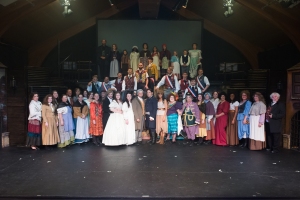

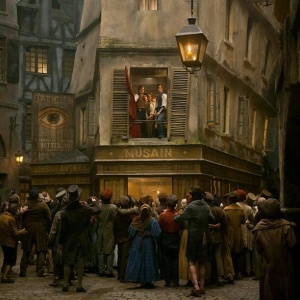
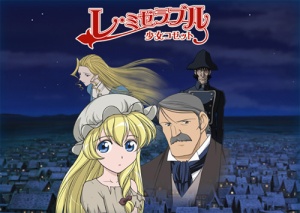
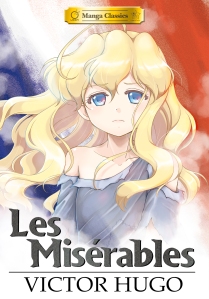
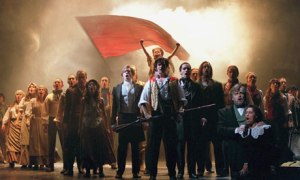


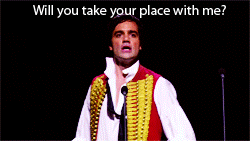
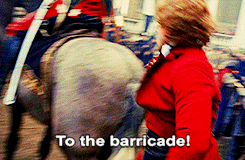




No hay comentarios:
Publicar un comentario